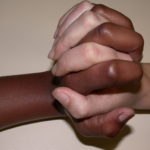The Demand for More Diversity in Publishing
In 2015, Mira Jacob attempted to give a keynote speech about the challenges facing writers of color in publishing. Half of the room turned away and talked over her. Jacob is one of many calling for more diversity in publishing, something to be ignored at the industry’s peril.
The Harrowing Statistics on Diversity in Publishing
A lack of diversity is a problem across all genres.
Leah and Bea Kosch conducted a survey for The Ripped Bodice. The report shows that for every 100 books that were published by leading romance publishers in 2016, just 7.8 were written by people of color. Half of the publishers surveyed had fewer than five percent of their books written by people of color.
The Cooperative Children’s Book Center’s statistics show that in 2016, Black, Latinx, and First/Native Nations authors, all combined, wrote only six percent of new children’s books that were published.
A Lee & Low study looked at the demographics of the publishing industry itself, finding that 92 percent of respondents identified as not disabled, 88 percent identified as heterosexual, and 79 percent identified as Caucasian.
What Publishers are Doing to Improve Diversity in the Publishing Industry
The Lee & Low study asked for responses from publishers about what they’re planning to do or are or already doing to make diversity a priority. Responses included initiatives like hiring and recruiting more diverse reviewers, training staff on cultural literacy and diversity, and creating awards and scholarships for diverse writers.
We Need Diverse Books asks why most people experience diversity as a part of everyday life, but experience a lack of diversity in fiction. The non-profit aims to put more books featuring diverse characters into the hands of all children, with a vision of a world in which all children can see themselves in the pages of a book. The organization provides support to this cause in many ways.
Grants provide financial support to emerging, diverse writers who are currently unpublished. One grant recipient, Angie Thomas, went on to write the award-winning “The Hate U Give,” which entered The New York Times’ young adult best-seller list at number one.
Mentorships pair writers with experienced authors and illustrators. Internships provide supplemental grants to diverse students with career goals in children’s publishing. Retreats, scholarship programs, and other support are being extended to writers, industry professionals, educators, and the public.
Bestselling author K. M. Jackson is a daily advocate for diversity in romance fiction, tweeting with the hashtag #WeNeedDiverseRomance. “When it comes to diversity in publishing, we still have so far to go,” she says. “As a result of many years of both intentional and unintentional racism in the entertainment industry, a narrative has been set that puts non-white media, including books, in an othering category. It’s a stereotype that has been proven false by hits like Scandal and Black Panther, but still one that the industry—the book industry especially—holds onto. It does this with things such as segregated lines of fiction, unequal marketing, book buying and selling by postal demographic, and hiring sensitivity readers instead of a diverse editorial staff. Many changes can and should be made. Here’s hoping they will be made, and sooner rather than later.”
For authors with a diverse background, or a book featuring diverse characters, writing and continually honing your craft is an important contribution to creating a diverse industry.
